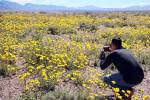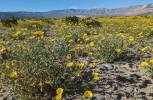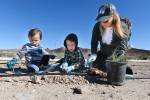Gardens require extra care in summer
June is a good month for gardeners to slow down. Early morning and late evening are the best times to work in your garden.
Temperatures will run in the high 90s and into the 100s. These temperatures really tax plants, not to mention us. Expect temperatures in the mid-60s to low 70s. Here are some tips for this month.
Flowers: For summer color, plant marigolds, periwinkles, cosmos, cockscombs, zinnias, portulacas, salvias, gaillardias, gloriosa daisies and sunflowers. Nip off spent blooms and feed them to generate more blooms. To control pests, wash down your flowers often.
Mums: To get the most from your fall mum show, prune each stem monthly until Labor Day and lightly fertilize monthly until flower buds color up this fall.
Veggies: You can still plant watermelons, cantaloupes, squash, pumpkins and cucumbers. For some mouth watering corn, plant it before Father’s Day. To extend the corn season, stagger your plantings from Father’s Day through mid-August. For good kernel formation, plant at least four rows of corn. Stop tomato hornworms and grape leaf skeletonizers organically with Bt. With the hot weather upon us, tomatoes will need misting to improve fruit set.
Fruit trees: Fertilize trees to ensure a 2014 fruit crop as trees are laying down their fruit buds now for a bountiful crop next summer. To increase peaches and nectarine size by as much as 40 percent, give them ample water this month.
Summer bulbs: Consider planting day lilies, cannas and dahlias. For more blooms, provide some afternoon shade.
Irises: The Iris Societies will be selling their prize irises in July. Irises need division every three to four years. Make those divisions a month after blooming.
Shrubs: Nip at your shrubs often to keep them compact. Lightly feed them with a shrub fertilizer. Continue to battle red spider mites by washing them off or spray them with insecticidal soap for best control. Treat yellow, sick-looking shrubs with iron chelates.
Shade trees: Deep-water trees to push salts beyond the root zone to avoid leaf scorch. Remove low-hanging, misdirected branches along pathways, and give them a light feeding to help them through the summer.
Container plants: High temperatures make potted plants suffer. Soil temperatures over 90 degrees inhibit and even kill roots, especially on a pot’s west side.
To protect containers, group them together to shade one another. Or place your containers in larger containers and fill in spaces between the pots with organic material to insulate them from the heat and reduce the frequency of irrigation.
Indoor plants: If you put your indoor plants outside, place them on the morning side of the house. Leaves accustom to indoors will burn in direct sunlight.
Watering: Irrigation is a major chore during the summer. Deep-water plants to encourage deeper rooting. Check your irrigation system often to make sure it’s putting water where plants need it.
Roses: Expect smaller blooms through the summer. To encourage more blooms, nip off all fading flowers. Roses want to go dormant through the summer, so only feed them half as much. To stimulate new cane growth, give them magnesium sulfate or Epsom salts (one-fourth cup per bush). Yellow leaves on bushes indicate a need for iron chelates. Follow all feedings with a deep irrigation. Treat powdery mildew infested roses with mildew fungicide.
Lawns: Check lawn sprinkler heads to prevent “brown outs.” Use slow-release fertilizers to gradually release nutrients for continual slow-growth greening.
Palms: Summer is the best time to transplant or plant new palms. To prevent transplanted palms from dehydration, tie fronds up over the center buds until new growth emerges.
Bugs: Stymie borers entering your trees and shrubs by painting newly exposed branches and trunks with white water-based paint. Control black widow spiders with pyrethrum. Continue to battle red spider mites by showering infested plants with soapy water and a good rinsing.
Linn Mills writes a garden column each Sunday. You can reach him at linnmillslv@gmail.com or call him at 526-1495.























